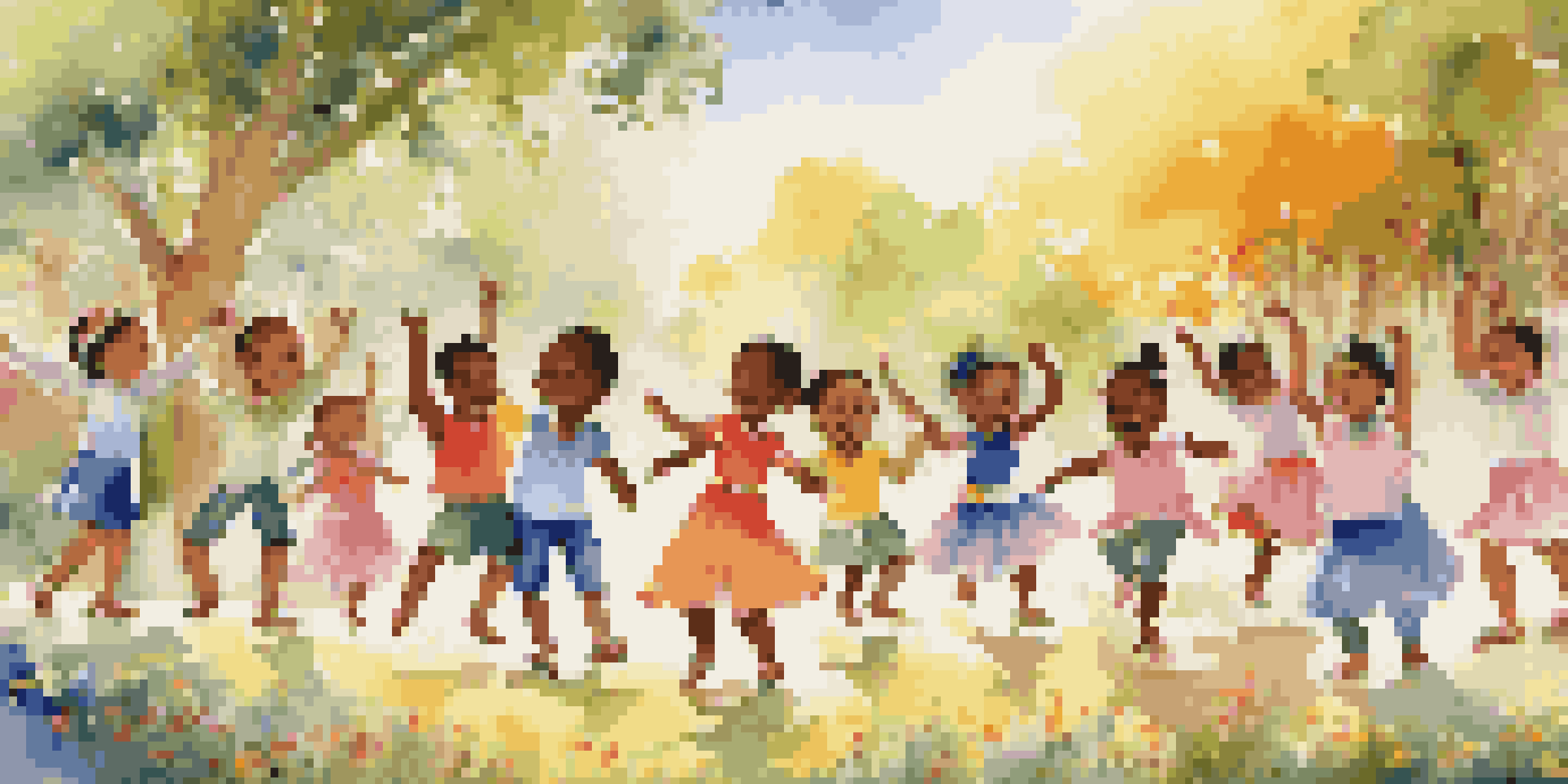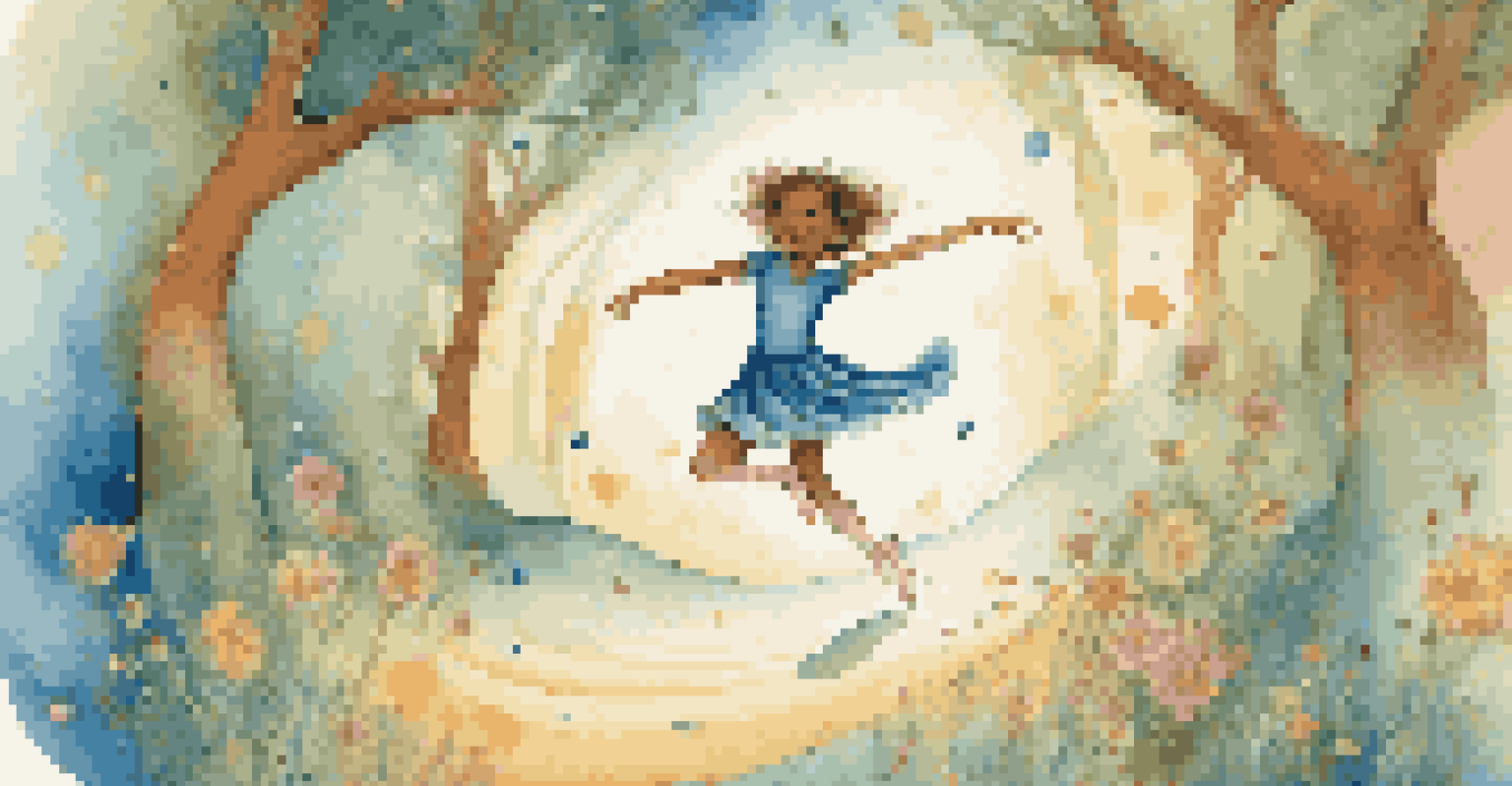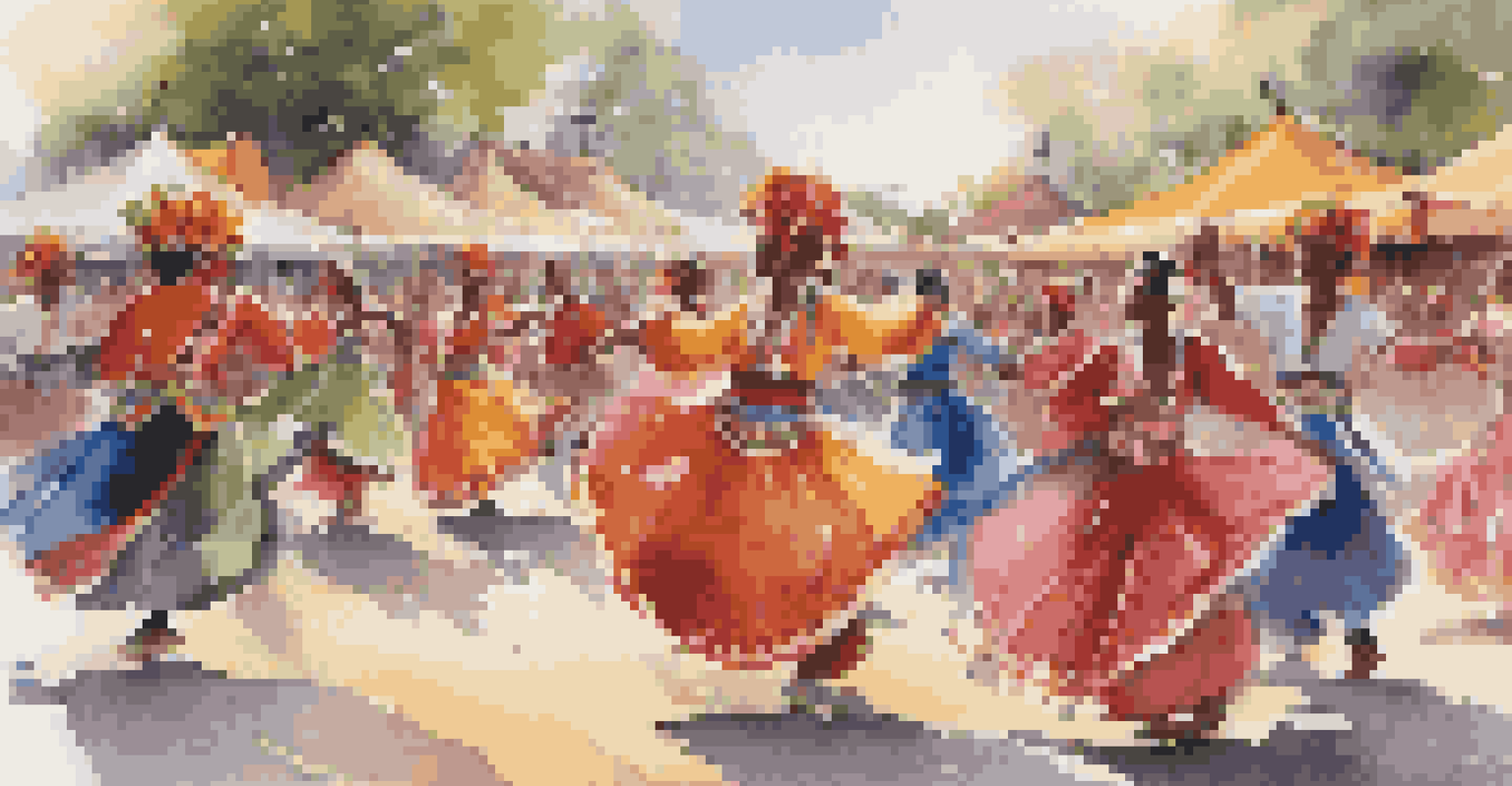The Symbolism of Dance in Children's Literature

Dance: A Universal Language in Children's Tales
Dance often serves as a universal language in children's literature, transcending barriers of culture and age. From classic fairy tales to modern picture books, dance conveys emotions and narratives that words sometimes can't capture. For instance, in stories where characters express joy or freedom, dance becomes a powerful tool to illustrate these feelings. It allows young readers to connect with the characters on a deeper level, fostering empathy and understanding.
Dance is the hidden language of the soul.
When children read about characters dancing, they might recall their own experiences, whether it's a joyful celebration or a playful moment with friends. This connection encourages engagement and can make the story feel more relatable. Moreover, dance can symbolize various themes such as friendship, courage, and self-discovery, enriching the reading experience.
By incorporating dance, authors invite readers to interpret movements and emotions uniquely, making literature a more interactive adventure. This artistic expression draws children into the narrative, stimulating their imaginations and encouraging them to explore their feelings. Ultimately, dance in children's literature not only entertains but also teaches valuable lessons about the human experience.
The Role of Dance in Character Development
Dance often plays a crucial role in character development within children's literature. Through dance, characters can showcase their personalities, fears, and aspirations, allowing young readers to witness their growth. For example, a shy character might begin to dance as a way to express themselves, symbolizing their journey towards confidence and self-acceptance.

Additionally, dance can serve as a catalyst for relationships between characters. When characters dance together, it often signifies unity, friendship, or even conflict, showcasing the dynamics of their interactions. This connection through movement can make the characters' relationships more tangible and relatable for young readers.
Dance Enhances Emotional Connection
In children's literature, dance serves as a powerful medium for expressing emotions, allowing young readers to connect deeply with characters.
As characters engage in dance, they may encounter challenges that reflect real-life experiences, such as overcoming stage fright or learning to work as a team. These moments resonate with children, teaching them important lessons about resilience and collaboration. In this way, the symbolism of dance extends beyond mere movement, becoming a vital component of character growth and story progression.
Cultural Significance of Dance in Children's Stories
Dance is often rooted in cultural traditions, and children's literature frequently reflects this diversity. Different cultures use dance to celebrate important events, tell stories, or express beliefs, making it a rich symbol in literature. When authors incorporate dance from various cultures, they provide young readers with a window into different ways of life, fostering appreciation and understanding.
Dance is the joy of movement and the heart of life.
For example, stories featuring traditional dances from around the world can introduce children to the unique customs and histories of different communities. This not only enriches the narrative but also teaches children the value of cultural diversity. When children encounter these varied expressions of dance, they learn that every culture has its unique stories to tell.
By celebrating the cultural significance of dance, children's literature becomes a tool for promoting inclusivity and respect for differences. Dance, in this context, is more than just an art form; it's a means of connecting with others and understanding the world. This understanding can inspire children to embrace diversity and create a more inclusive society.
Dance as a Metaphor for Growth and Change
In many children's stories, dance serves as a metaphor for personal growth and transformation. Characters often undergo significant changes, and their journey can be beautifully depicted through the act of dancing. For instance, a character might start off stumbling and awkward, only to find grace and confidence as they learn and grow, mirroring their emotional journey.
This metaphorical use of dance illustrates that growth is a process filled with ups and downs. Just as dance requires practice and perseverance, so too does personal development. When children see characters navigating challenges through dance, they are encouraged to embrace their own struggles and recognize that growth takes time.
Cultural Insights Through Dance
Children's stories often incorporate dance to reflect cultural traditions, fostering appreciation and understanding of diverse ways of life.
Moreover, dance can symbolize the transitions that accompany growing up, such as moving from childhood to adolescence. By connecting these themes, authors can guide young readers through their own life changes, helping them understand that it’s okay to feel uncertain or afraid. Ultimately, dance becomes a powerful symbol of resilience and hope in the face of change.
The Emotional Impact of Dance in Storytelling
Dance has a unique ability to evoke emotions, making it a powerful element in children's storytelling. Through movement, characters can express feelings that words alone may struggle to convey. Whether it’s the exuberance of a celebration or the sorrow of a farewell, dance adds depth to the emotional landscape of a story.
When children witness characters dancing to express their emotions, they are encouraged to explore and understand their feelings. This can be especially impactful during formative years when children are learning to identify and articulate their emotions. Dance, in this context, becomes a tool for emotional literacy, guiding them through complex feelings.
Furthermore, the rhythm and flow of dance can enhance the overall narrative, creating a sensory experience for young readers. This engagement not only captivates their attention but also reinforces the emotional stakes of the story. By intertwining dance with storytelling, authors create a vivid tapestry of feelings that resonates long after the last page is turned.
Dance as a Tool for Empowerment and Expression
In children's literature, dance often symbolizes empowerment and self-expression. Characters who embrace dance are frequently depicted as finding their voice and asserting their individuality. This theme is particularly important for young readers, as it encourages them to be true to themselves and to express their own identities.
For instance, stories that feature characters breaking free from societal norms through dance can inspire children to challenge expectations and embrace their uniqueness. This empowerment is essential for developing self-esteem and confidence, as children learn that their feelings and expressions are valid. Through dance, they can discover that they have the power to shape their own narratives.
Dance as a Metaphor for Growth
Dance is used as a metaphor in stories to symbolize personal growth and resilience, illustrating the journey of characters as they navigate life's challenges.
Moreover, dance can also serve as a form of activism in children's literature, addressing issues such as inequality or injustice. By showcasing characters who use dance as a means of protest or community gathering, authors highlight the importance of collective action and solidarity. This not only empowers children but also teaches them the significance of standing up for what they believe in.
Imagery and Visualization: Dance in Illustrations
The imagery of dance in children's literature is often enhanced through vivid illustrations, bringing the movements and emotions to life. Illustrators play a crucial role in depicting dance, using colors, shapes, and lines to convey the energy and spirit of the performance. This visual representation can captivate young readers, drawing them deeper into the narrative.
For example, a beautifully illustrated dance scene may evoke feelings of joy, movement, and rhythm, making the experience more immersive. The combination of text and illustration allows children to visualize the dance, transforming it into a dynamic part of the story. This synergy between words and images can inspire children to engage with both the text and the art.

Furthermore, illustrations can also reflect the cultural significance of dance, showcasing traditional attire and settings. This not only educates children about different dance forms but also enriches their understanding of cultural contexts. By integrating dance into illustrations, authors and illustrators together create a holistic reading experience that resonates with young audiences.